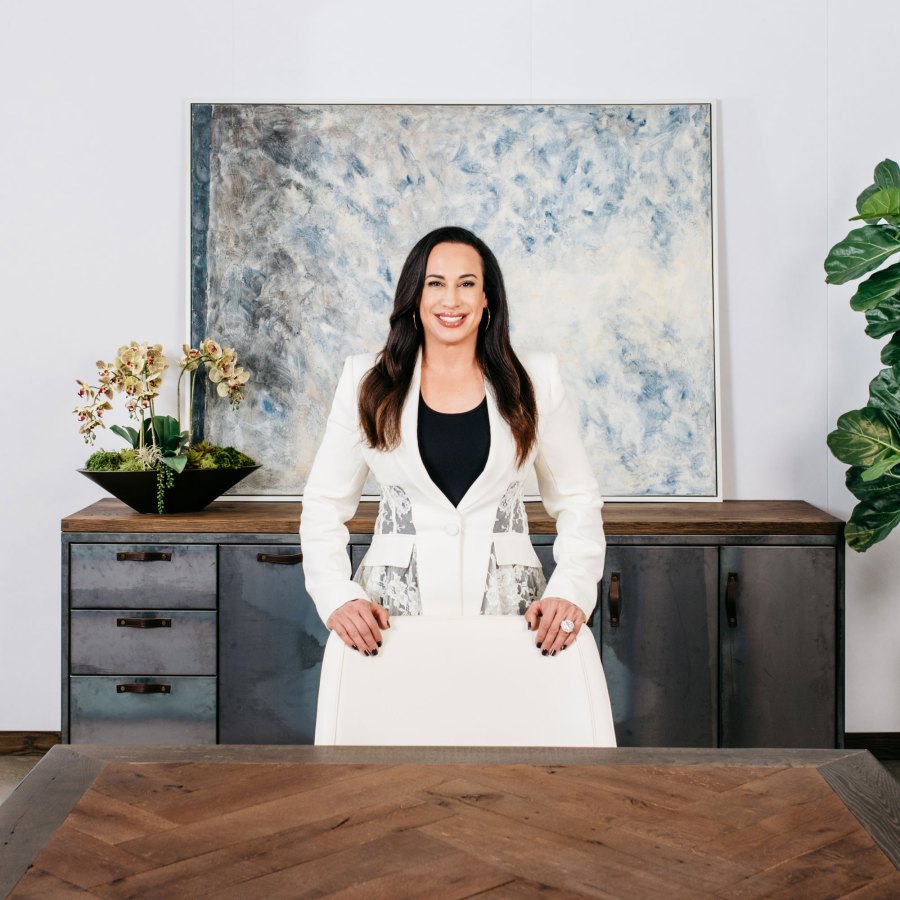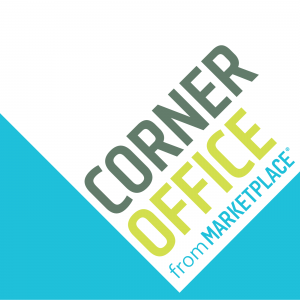Dany Garcia runs one of the most influential companies you probably haven’t heard of

If you happened to see Dwayne Johnson in “Fast & Furious Presents: Hobbs & Shaw,” or if you follow his Instagram (and let’s be honest, that’s a lot of us), then you have Dany Garcia to thank — at least in part. She’s the CEO of The Garcia Companies, a holding company that manages the enterprises surrounding Johnson, as well other Hollywood actors like Henry Cavill.
For this latest episode of “Corner Office,” “Marketplace” host Kai Ryssdal visited Garcia in her Los Angeles office, where they talked about what it’s like to build an enterprise around a person, along with bodybuilding, which she does competitively. The following is an edited excerpt of their conversation. To hear the full interview, click the audio player above.
Kai Ryssdal: If I say you are … one of the most influential companies in Hollywood that nobody’s ever heard of, do you buy that?
Dany Garcia: Um, I think, you know what? I never think too much of the, “No one’s ever heard of,” because I’m always in the grind of moving forward. But I think you’re right. I think people are like, “Really? Wow, what do you do?” And then they see what we do. And they’re like, “Wow, how have we never heard of you?”
Ryssdal: Tell me about the grind.
Garcia: So I’ll back up a little bit. The Garcia Companies, which is sort of the focus of what we’re talking about today, it’s a holding company. It’s a private holding company made up of a portfolio of consumer-facing innovative entertainment, media, food, fitness-driven products and brands.

Ryssdal: I’m going to pause here to note that you had a career on Wall Street, you come from finance, and so you’re talking the talk?
Garcia: That’s right. OK, so within that portfolio, you’re, today, at TGC Management Group. That’s the hub, the brand consulting, marketing, developing group that manages Dwayne Johnson, Henry Cavill, Seven Bucks, enterprises, Seven Bucks Companies, tequila, etc. So when you look at this portfolio, you might think there’s all these different expressions. But if you begin to drill back and drill higher or go higher and higher, you’re going to see that they’re actually very intricately related. So they flow from — we’ll use Dwayne, right? My best and most beautiful case study. The master. There’s nothing in his expressions, and his expressions are his companies or his projects, that don’t relate to everything he does in a single day. So when I’m adding —
Ryssdal: Sorry, that is so intentional.
Garcia: It is. Well, there’s no —
Ryssdal: It has to be, I guess.
Garcia: Well … if you look at the past, and you’ve look at icons who are no longer with us, there is a reality to getting to a certain size and scope, and how destructive that could be, if you’re creating an enterprise for an individual, and this is their 24 hours, and then you have to add five hours and 10 hours and lanes that go out and out, you will have no long-term success. It’s detrimental to the individual, it’s detrimental to the brand.
Ryssdal: The word that comes to mind right now is discipline.
Garcia: Well, you’re talking to a professional bodybuilder.
Ryssdal: Now that you’ve raised it, right, that’s clearly … it’s rooted in there somehow, right?
Garcia: It’s rooted in the principle of the “yes” and the “no” and sticking to the plan. Knowing what looks like chocolate cake, but is actually going to hurt you on stage.
Ryssdal: Yes, that’s so good. OK, so look, as you scale and develop new expressions, right, for Dwayne or anybody, what’s your risk tolerance?
Garcia: Good. That’s a great question. It depends on where the interest, I’m going to call it the principal, which can either be an individual or brand, it really depends on where they’re at. And if somebody’s is at. … Let’s say we have a project or a principal who’s just initially, or they are initially just interacting with the markets, there should actually be a lower risk tolerance, because every step that they take in every extension, from that very, very initial beginning point, is actually more critical than if you’ve been out in the markets for 10 years. And you have a, you know, you don’t just have a lane, you have a 10-lane highway, which you’ve sort of explained to everyone who you are, [and] what you do. You had failures, you had successes, but people will —
Ryssdal: You have goodwill, right?
Garcia: You have goodwill, and people understand why you do things, and that the intent is there to get better. And so you’ve given yourself room. When you’re first beginning, you will do 5% of the work, but the audience and the consumer will do 95% of the work in filling in the bias of who you are. Right? So they’re filling in the gap of who you are. Maybe you with me right now. You’re like, “I think I know her, she’s got curly, curly hair.” You’re like, “I have experienced but I’m filling her in.” So until I can begin to share with you all of my complexities in a manner of goodwill that makes sense, each initial step becomes critical.
Ryssdal: These are interesting times in the global economy, in politics in this country, in your business of entertainment and mass media, because consumers have choices and options. What’s the systemic risk for you?
Garcia: I feel it’s our risk — just speaking overall, holistically about our risk — I feel from the beginning, we’ve minimized a lot of our risk, because we’re audience first, right? We’re consumer first. We are who is on the other side. The risk is going to be if we lose touch with that understanding. So I’m very, very interested in intelligence from all over and sorting through that to help me understand various economies and the people within the economy. You can have a conversation that’s at a political level, and it’s completely disconnected from what the consumer is actually feeling. So it’s there. It lives in the mindset of “Can we stay open enough to really understand what people are saying or feeling or wanting, even if it’s different than what we’re feeling or wanting?”













